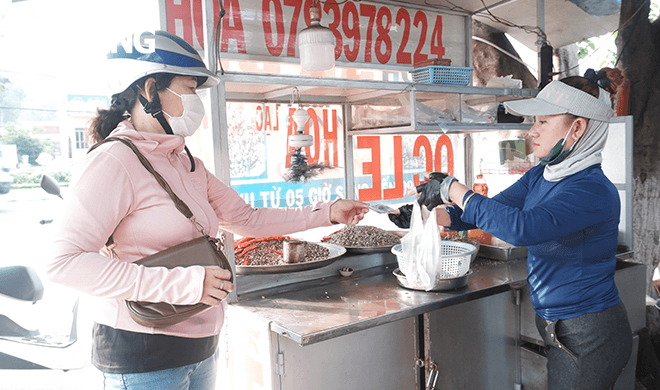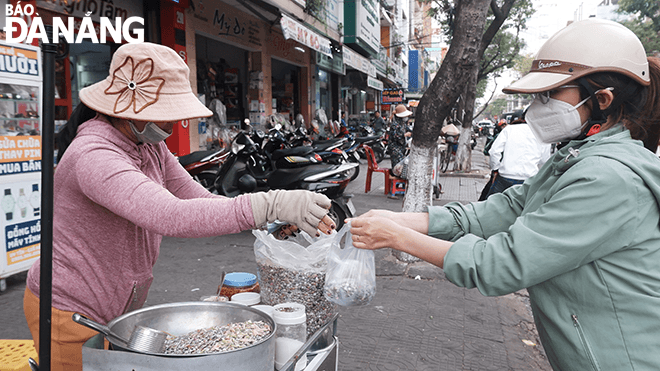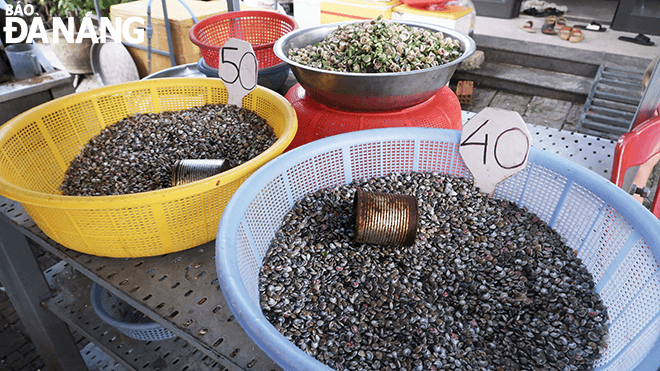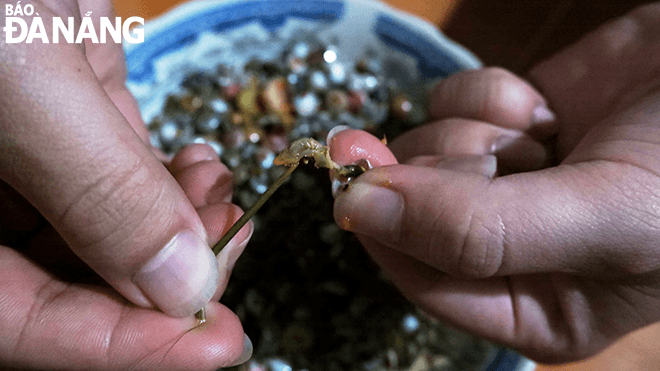Joy of eating tiny, colourful snails
Snails might be considered a bizarre snack in some countries, but in Central Viet Nam, especially Da Nang, tiny, colourful seashells are parts of the local cuisine.
 |
| Mrs. Huynh Thi To Hoa (right), the owner of the Hoa snail stall, has got involved in selling snails from very early age. |
These tiny snails, or ‘oc le’, ‘oc gao’ and ‘oc ruoc’ in Vietnamese, are farmed at the end of spring and in early summer. They wash up on the beach naturally, but to catch large quantities, fishermen need to go further out to sea and scrape them from the seabed using nets.
Since early January, stalls selling ‘oc le’ have grown along such major streets as Ong Ich Khiem in Hai Chau District, Le Van Hien in Ngu Hanh Son District, and Nguyen Canh Chan in Lien Chieu District, and in wet markets. Besides, a large number of street vendors on bikes or motorbikes have been seen roaming many streets citywide to sell ‘oc le’.
Mrs. Huynh Thi To Hoa, 40, residing in Ngu Hanh Son District, the owner of the Hoa snail stall on Le Van Hien Street, said that when she was a child, she stuck to the selling of snails. However, at that time, she sometimes helped her mother in sales. Until her mother passed away, Hoa decided to follow her mother’s career. Gradually, her life has got better thanks to the tiny snails.
Every day, Mrs. Hoa sells an average of 10 angs per day, and up to 17 angs on weekends (each ang equivalent to 30-36 Ong Tho milk cans).
Tiny snails have many sizes and are taken from many different beaches such as Non Nuoc (Da Nang); Hoi An and Tam Ky (Quang Nam Province); and Quang Ngai Province.
After buying snails from traders, Mrs. Hoa will immediately refrigerate them to keep freshness. Before selling, she washes the sand off snails with water many times, then boils them and puts them in a basket to dry. Snails, depending on the sizes, have different prices ranging from VND20,000 to VND50,000/can..
‘Oc ruoc’ taste like the ocean, with their salty, chewy texture. However, like many other Vietnamese dishes, they are not complete without a good dip, usually a mixture of fish sauce, chili, lemongrass and garlic.
Customers come to buy and choose the snail size that suits their budget and preferences. Then, Mrs. Hoa quickly dips the boiled snails 3-4 times in boiling water, pouring into a nylon bag, and adding ginger sauce, salt, chili, and lemongrass. She takes a spoon to stir quickly and evenly so that the snails are soaked in spices. It takes her only 2-3 minutes to do the abovementioned process.
 |
| Mrs. Tran Thi Bich Thao (left) has been selling in tiny snail sales over the past 12 years. |
Mrs. Tran Thi Bich Thao, 45, residing in Thanh Khe District’s Xuan Ha Ward, said, at this time, although the snails are tiny, they are the most delicious and fattest. Every day, she sells 2-3 angs per day and earns VND400,000 - VND500,000/day in profit.
Snails are a specialty of the central seas. Snails are seasonal, each season lasts about 6 months. Perhaps because of that seasonality, when the snail season comes, many people are so excited. Those who are already addicted to this dish will love the salty and fatty taste of tiny snails. Thanks to that, snail sellers can earn more income in order to improve their living conditions.
 |
| When customers come to buy, the seller will reheat boiled snails. |
 |
| Snails, depending on the sizes, have different prices ranging from VND20,000 to VND50,000/can. |
 |
| Snails need to be picked out with a special tool, usually a pomelo thorn. |
Reporting by THU DUYEN - Translating by M.DUNG